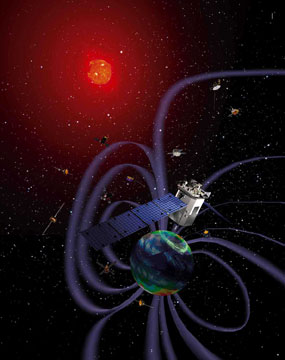There are close calls in space, and then there are close calls. At around 1:30 a.m. Eastern on Feb. 28, a NASA space science satellite called TIMED, operational but not maneuverable, passed near Cosmos 2221, a defunct Russian intelligence satellite. The conjunction was alarming enough to NASA that it notified media an hour before closest approach, warning that a collision “could result in significant debris generation.”
Fortunately, there was no collision. NASA didn’t disclose how close TIMED came to Cosmos 2221, but LeoLabs, a company that operates a network of space tracking radars, determined that the two spacecraft passed within 20 meters of each other. Had they collided, the collision could have produced up to 7,000 fragments large enough to track, increasing the debris population in low Earth orbit (LEO) by 50%.
Such close calls are rare: LeoLabs said it was aware of only six similar conjunctions in the last two years. One reason such events are not more frequent, even as the population of LEO grows, is the rise of regulations and best practices meant to mitigate the growth of orbital debris.
One of the first such debris mitigation regulations was enacted two decades ago by the Federal Communications Commission. Among its provisions was a requirement that a company licensed by the FCC or seeking market access in the U.S. had to deorbit its satellites no more than 25 years after its mission ended.
At a Feb. 29 event at FCC’s Washington headquarters, FCC officials and others said those regulations have been beneficial to space sustainability. “The FCC was really doing us a favor by taking some of this on,” recalled Scott Pace, director of George Washington University’s Space Policy Institute. “The FCC was not exactly chomping at the bit to get into this.”
The FCC, if reluctant to get involved, has been successful, he concluded. “I think that’s largely worked.”
Karl Kensinger, who has worked on…
Read the full article here

